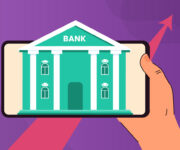B2C (business-to-consumer) BNPL has been growing in popularity among millennials, particularly Gen Z. Millennials often lead the B2B buying process in their workplaces, just like in consumer markets. With the growing popularity of eCommerce and increased demand for digital payments in the B2B marketplace, B2B BNPL has emerged as a natural fit for customers looking for more credit options.
In this article, we will witness how BNPL, having revolutionized consumer finance in recent years, is now set to undertake a similar transformation in the B2B lending space.
What is BNPL?
Buy now, pay later is a fintech solution that enables shoppers to pay for everyday products by splitting their purchases into three or four instalments with little to no interest, giving them instant credit.
Emerging as an alternative credit payment approach, BNPL aims to meet the need of younger consumers who often have a limited credit history and low credit scores to pay for items on instalment plans.
BNPL also helps drive higher average order volumes, speed up cash flow, enhance customer service, and boost business growth.
BNPL providers charge retailers higher transaction fees because of the risk. It marks the greatest disruption in consumer finance since credit cards.
What is B2B BNPL? Can it repeat the success of B2C BNPL?
B2B credit is not a new concept, as invoice financing already exists through which most businesses can already pay for an item or service at a later date.
As business models are increasingly looking to implement online infrastructure like eCommerce sites, BNPL solutions will need to be accessible and integrated at the point of sale and purchase.
Unlike the mass market of B2C BNPL, companies offering B2B BNPL will also need to ensure that their solutions are flexible to satisfy each borrower’s individual needs, which will lead to the rise of B2B BNPL.
Factors that led to the rise of B2B BNPL
Modern-day businesses operate within a different technological, financial, and social context, leading to the rise of B2B BNPL.
The different factors which led to the rise of B2B BNPL are:
1. Rise in financial technologies
Granting credit was time-consuming, requiring manual checks typically done offline by businesses. There could be a delay of several days in this process.
The rapid adoption of open banking solutions, which enable fast and accurate credit checks, and automated KYC, simplifies the entire lending process, allowing lending decisions to be made in minutes.
2. Success of the B2C model
The success of B2C BNPL has prompted businesses and lenders to consider how they can emulate the BNPL model in the B2B world while improving obvious drawbacks such as lending to people with poor credit histories.
3. Economic impact of the pandemic
Global restrictions on economies have devastated SMEs that face pressure on cash flow and capital to survive and expand.
B2B BNPL has the potential to revive the strained credit lines and give businesses a way to pay their suppliers within a reasonable period.
Benefits of B2B BNPL for companies
The pandemic economic climate has been difficult due to supply chain disruptions and labour challenges. The flexibility of BNPL payment options can increase customer loyalty and profitability.
Beyond that, there are a lot of benefits of B2B BNPL:
1. Increase in size of the purchase
Buyers can make high-value purchasing decisions when payments are spread out over three or four months. The merchants who provide this type of financing can expect to see increases in average purchase size from their customers.
2. Predictable cash flows and business growth
BNPL allows the merchants to get paid upfront. Like credit card companies, the BNPL solution providers ensure merchants receive payments within 24 to 48 hours with zero chargeback liability.
A near-instant payment means more cash flows into the business’ bank account. The business has the freedom to take on initiatives that drive business growth through intelligent business planning, cash allocation, and purchasing. As a result of more predictable, reliable payments, the business can operate more efficiently in the following ways:
- Paying expenses on time
- Purchasing inventory
- Paying debts
- Reinvestment in the business
- Forecast for the future
3. Enhanced customer loyalty
Customers may be more loyal to companies that allow them to hold onto their cash for extended periods.
Offering this option is like doubling down on the customer service millennials want since BNPL is integrated with eCommerce and digital payment options.
Challenges in B2B BNPL for the Companies
The B2B commerce opportunity is about three times larger than the B2C opportunity, with trillions of dollars of payment transactions already flowing between businesses worldwide.
However, even though BNPL has massive potential in B2B transactions, the complexity of lending at the point of sale is higher than in B2C, so B2B is taking longer to scale.
Some challenges are:
1. Lengthy and expensive process
The companies must undertake various credit and enrollment checks, underwriting, reconciliation into accounting systems, multiple payment streams, and so forth. This leads to an added cost for the businesses to incur for providing credit services to their customers.
2. High-value, complex transactions
B2B merchants are typically involved in high-value, complex transactions, often involving transactions over ₹100,000, ₹500,000, or more.
Also, providing a ₹30 lakh loan at checkout within seconds is much more difficult than giving a 3000 rupees loan to a consumer buying a pair of sneakers.
How Finezza Can Help You Overcome These Challenges
In B2B BNPL, customers’ businesses and identities must be verified, credit limits are allocated, payments are processed, collections are managed, and refinancing options are offered.
The best way to handle such a complex task is to work with Finezza, which has developed a wide variety of products, including
As a result, B2B marketplaces can collect information about buyers and sellers, including transactions, inventory, and company growth trends. They can extend credit using the collected information, including whether they have been delinquent on payments or have made erratic purchases.
Wrapping up
The B2B BNPL FinTech model holds great promise to provide credit to almost every business sector and overcome post-pandemic supply line disruptions.
With the right infrastructure partners, B2B marketplaces can shift their transactional volumes to BNPL, offering customers a low-cost way to finance purchases and sellers a safe, data-driven way to collect payment.
Contact us today to learn how we can help you!




Leave a Reply